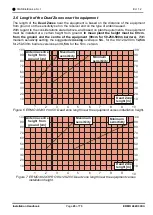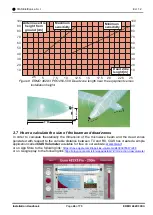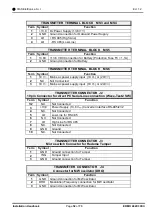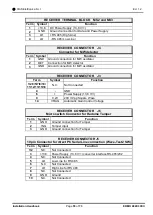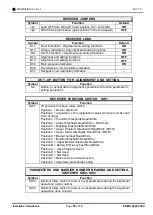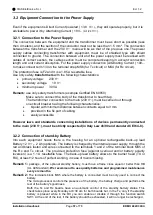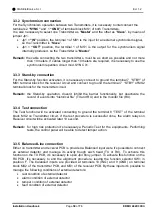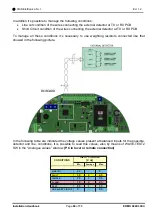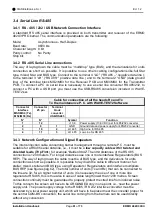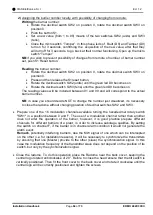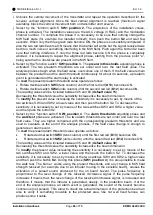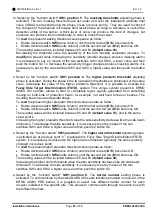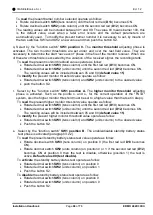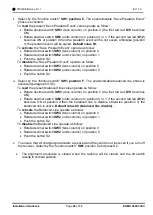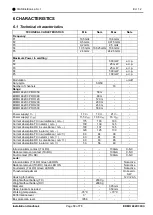
CIAS Elettronica S.r.l.
Ed. 1.2
Installation Handbook
Page
59
of
73
ERMO 482X3
PRO
3.3.2 Synchronism connection
For the Synchronism operation between two Transmitters, it is necessary to interconnect the
terminals 2
“SYNC”
and 1
“GND”
of terminal block MS1 of both Transmitters.
It is also necessary to select one T
ransmitter as “
Master
” and the other as “
Slave
”, by means of
jumper Jp1.
•
Jp1 =
“IN”
position, the terminal 1 of MS1 is the input for an external synchronism signal,
so the T
ransmitter is “
Slave
”.
•
Jp1 =
“OUT”
position, the terminal 1 of MS1 is the output for the synchronism signal
internally produced, so the T
ransmitter is “
Master
”
Remark:
the cable connecting the two transmitters, must be as short as possible and not more
than 10 meters. If cables longer than 10 meters are required, it is necessary to use the
synchronism repetition circuit mod. SYNC 01.
3.3.3 Stand-by connection
For the Stand-by function activation, it is necessary connect to ground the terminal 7
“STBY” of
MS1 terminal block for the receiver circuit and connect to grou
nd the terminal 7 “STBY” of MS2
terminal block for the transmitter circuit.
Remark:
the Stand-
by operation, doesn’t inhibit the barrier functionality, but deactivate the
record of events int
o “historical file” (TX and RX) and in the monitor file (RX).
3.3.4 Test connection
The Test function will be activated connecting to ground the terminal 8 “TEST” of the terminal
block MS2 on Transmitter circuit. If the test procedure is successful done, the alarm relays on
Receiver circuit will be activated later 10 second.
Remark:
for high risk protection it’s necessary a Periodic Test for the equipments. Performing
tests, the control panel will be able to detect tamper action.
3.3.5 Balanced Line connection
Either on transmitter and receiver PCB is provided a B
alanced input were it’s possible to connect
an external detector and manage its activity trough each head (TX or RX). To activate this
function on the TX PCB, it’s necessary to open Jp4 tinny jumper. To activate this function on the
RX PCB, it’s necessary to end the alignment procedure, leaving the function selector SW1 in
position F. The balanced inputs are provided at terminals 10 (ING) and 9 (GND) on terminal
block MS2 of the transmitter PCB, and MS1 o
f the receiver PCB. By these inputs it’s possible to
manage the following conditions of external detectors:
•
rest condition of external detector
•
alarm condition of external detector
•
tamper condition of external detector
•
fault condition of external detector

